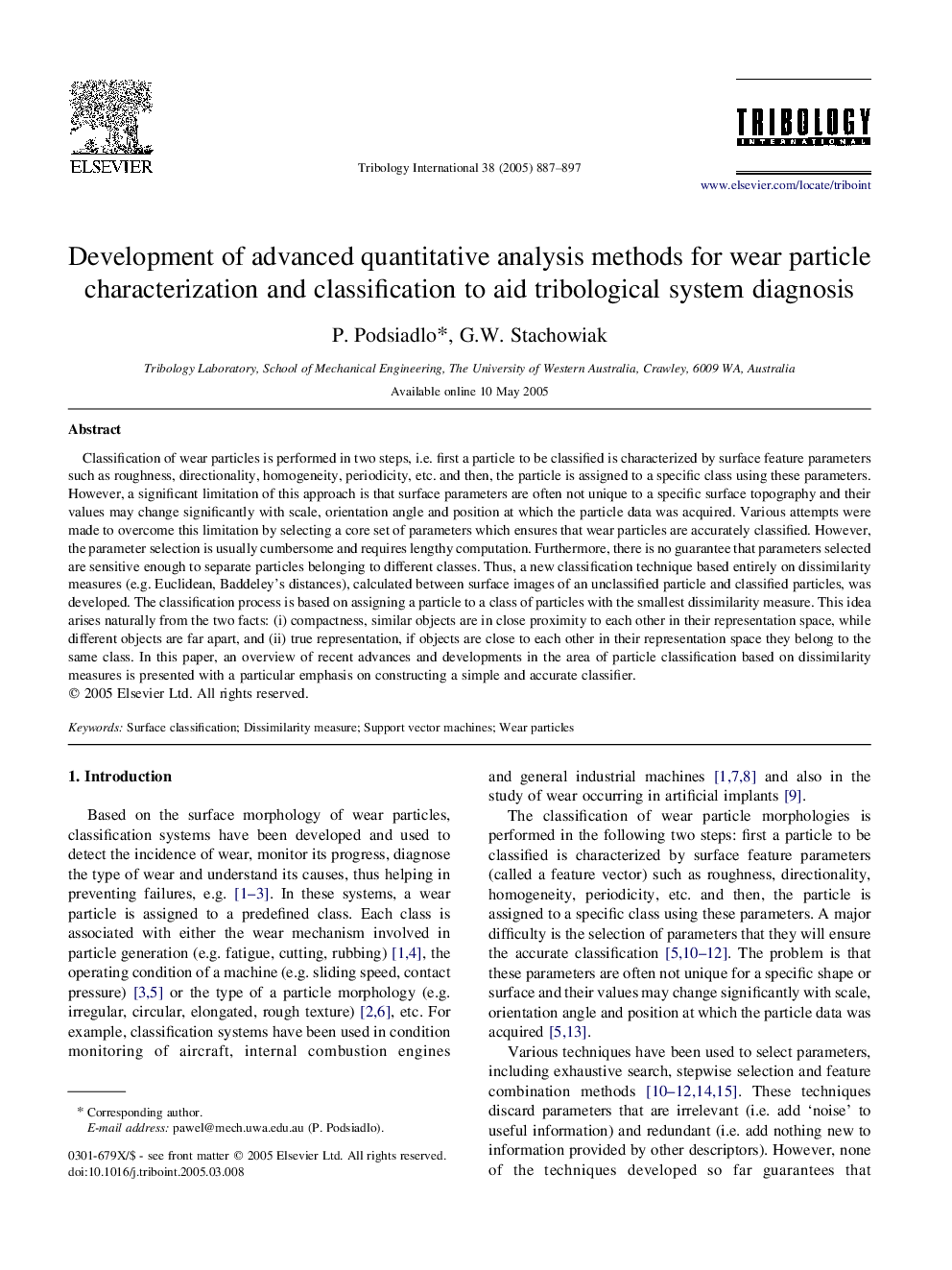| Article ID | Journal | Published Year | Pages | File Type |
|---|---|---|---|---|
| 10384281 | Tribology International | 2005 | 11 Pages |
Abstract
Classification of wear particles is performed in two steps, i.e. first a particle to be classified is characterized by surface feature parameters such as roughness, directionality, homogeneity, periodicity, etc. and then, the particle is assigned to a specific class using these parameters. However, a significant limitation of this approach is that surface parameters are often not unique to a specific surface topography and their values may change significantly with scale, orientation angle and position at which the particle data was acquired. Various attempts were made to overcome this limitation by selecting a core set of parameters which ensures that wear particles are accurately classified. However, the parameter selection is usually cumbersome and requires lengthy computation. Furthermore, there is no guarantee that parameters selected are sensitive enough to separate particles belonging to different classes. Thus, a new classification technique based entirely on dissimilarity measures (e.g. Euclidean, Baddeley's distances), calculated between surface images of an unclassified particle and classified particles, was developed. The classification process is based on assigning a particle to a class of particles with the smallest dissimilarity measure. This idea arises naturally from the two facts: (i) compactness, similar objects are in close proximity to each other in their representation space, while different objects are far apart, and (ii) true representation, if objects are close to each other in their representation space they belong to the same class. In this paper, an overview of recent advances and developments in the area of particle classification based on dissimilarity measures is presented with a particular emphasis on constructing a simple and accurate classifier.
Related Topics
Physical Sciences and Engineering
Chemical Engineering
Colloid and Surface Chemistry
Authors
P. Podsiadlo, G.W. Stachowiak,
